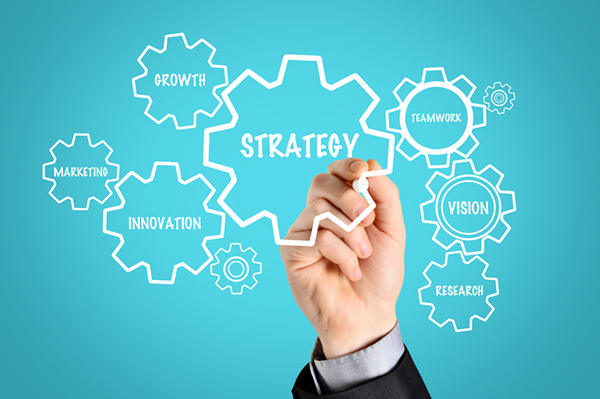Defining strategies is a fundamental process for any organization seeking to achieve its goals and ensure sustainable growth. This involves analyzing both the internal and external environments of the organization, identifying long-term goals, and creating a plan to achieve those objectives. Below, we outline the key steps in defining strategies:
1- Analyzing the Internal and External Environment
SWOT Analysis:
- Strengths: What does the company do well? What unique resources does it possess?
- Weaknesses: What areas need improvement? Where does the company require development?
- Opportunities: What external trends can the company capitalize on?
- Threats: What external challenges might the company face?
PESTEL Analysis:
- This includes examining political, economic, social, technological, environmental, and legal factors that may impact the company.
2- Defining the Vision and Mission
- Vision: A long-term vision of what the company aspires to be in the future.
- Mission: The core purpose of the company's existence and what it aims to achieve on a daily basis.
3- Setting Long-Term Goals
SMART Goals: The goals should be Specific, Measurable, Achievable, Relevant, and Time-bound.
4- Developing Strategies to Achieve the Goals
- Growth Strategies: These could include expanding into new markets, developing new products, or increasing market share.
- Stability Strategies: These might focus on improving operational efficiency efficiency or strengthening relationships with existing customers.
- Exit Strategies: This could involve reducing non-profitable activities or withdrawing from unattractive markets.
5- Analyzing Strategic Options
- Selecting the Optimal Strategy
- Competitor Analysis: Study competitors to understand their strategies and assess their strengths and weaknesses.
6- Selecting the Optimal Strategy
- Evaluation: Assess strategic options in terms of costs, benefits, risks, and alignment with long-term goals.
- Decision-Making: Choose the optimal strategy based on a comprehensive analysis and evaluation.
7- Implementing the Strategy
- Execution Plan: Develop a detailed implementation plan that outlines required resources, timelines, and responsibilities.
- Change Management: Ensure all stakeholders are informed of changes and actively involved in the execution process.
8- Monitoring and Evaluating the Strategy
- Monitoring: Regularly track the progress of strategy implementation.
- Evaluation: Assess the results against the established goals and make necessary adjustments if needed.
By following these steps and utilizing the mentioned analytical tools, companies can effectively define strategies that contribute to achieving their goals and ensuring sustainable growth. Alternatively, you may inquire about the services of Business Pillars CPAs for goal achievement and sustainable growth.




